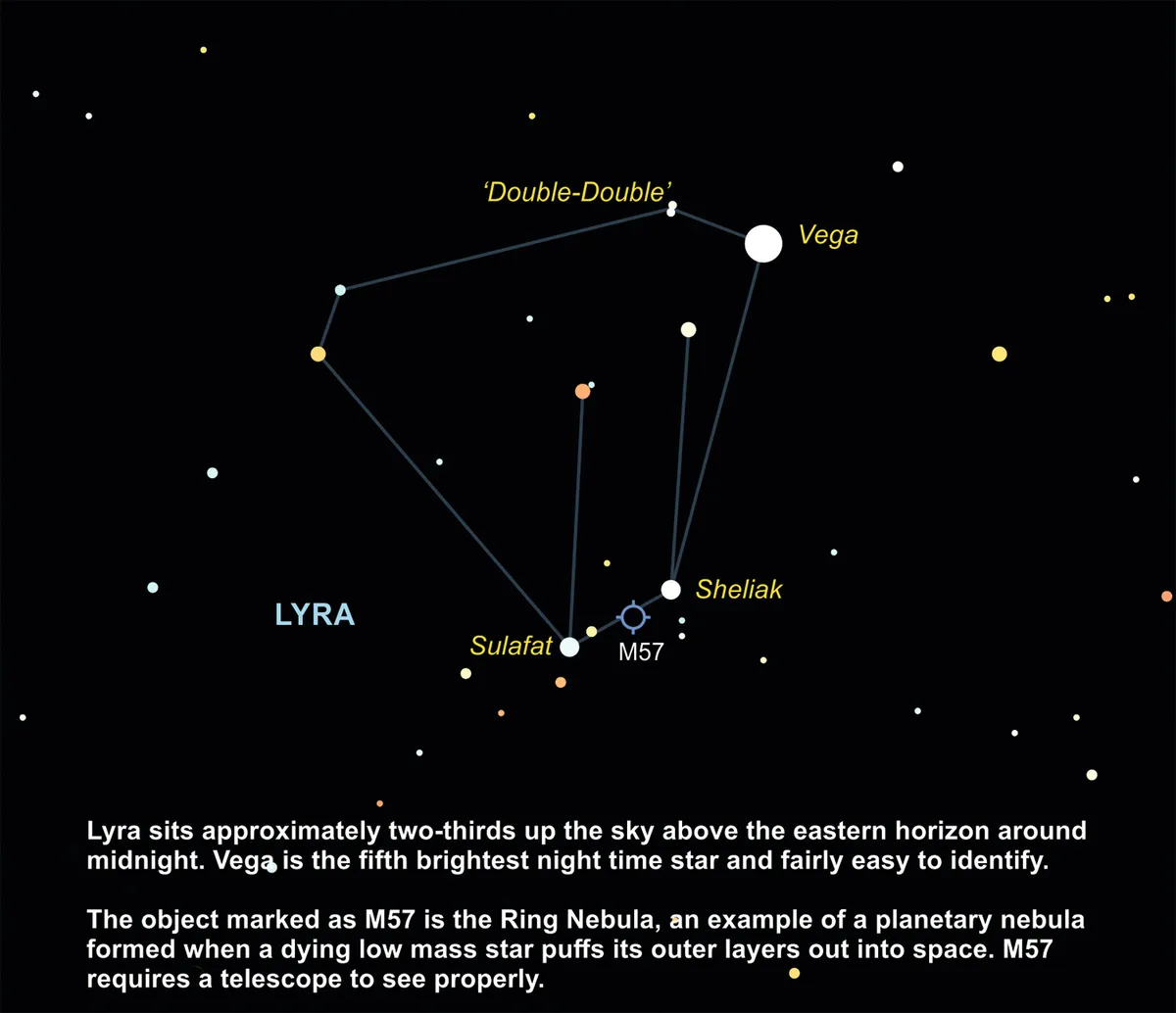Considered a summer pattern, the small constellation of Lyra the Lyre is actually visible for most of the year. In fact, its brightest star Vega, never sets from much of the UK, but instead appears to scrape the horizon when it lies due north.
During May and into June, Lyra appears roughly two-thirds up the sky above the eastern horizon around midnight.
Vega is the brightest star in the large asterism (unofficial pattern) known as the Summer Triangle, the two other vertices marked by Deneb in Cygnus the Swan and Altair in Aquila the Eagle.

From the UK, Deneb appears left and down a bit from Vega at this time of year,whileAltairisa little lower than halfway between Vega and the horizon. For a while, Vega was used as the reference point against which the brightness of all other stars was measured, representing a value known as zero magnitude.
Immediately below Vega is a parallelogram of starsthatrepresents the main body of the lyre,a harp-like musical instrument. Identify the nearest star in the parallelogram to Vega and imagine the two stars forming one side of an equilateral triangle.
The third vertice in this triangle is located to the left of Vega. Stare carefully at this star and with good eyesight, it should be possible to split it into a pair.
Amazingly, through a telescope, each of these components can be split again. This appearance has led to this star, formally known as Epsilon Lyrae, being nicknamed the Double-Double.
Read more:
- How can I see the Andromeda Galaxy?
- How do I find the North Star?
- When is the next full Moon? Your lunar astronomy guide
- Why can we only see one side of the Moon?
To submit your questions email us at questions@sciencefocus.com (don't forget to include your name and location)
